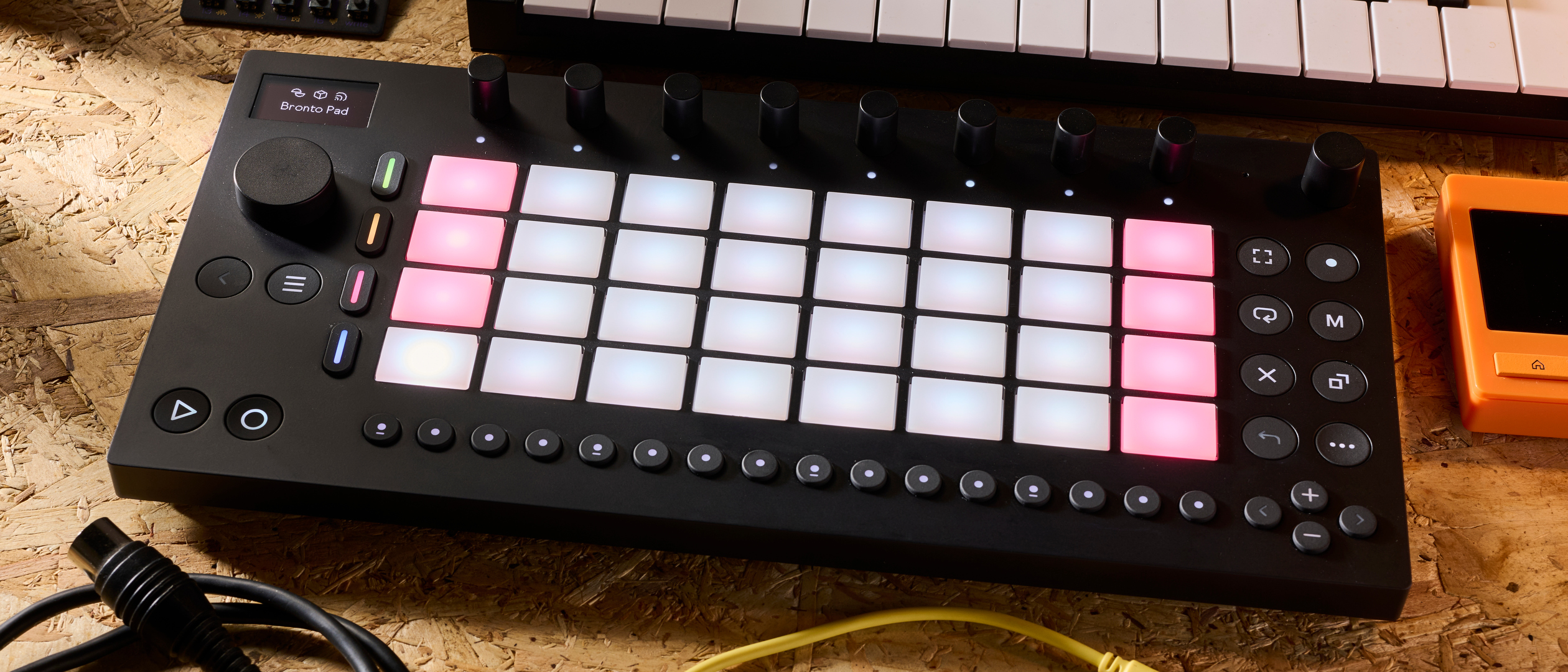MusicRadar Verdict
Move is an excellent sketchpad and handy Live controller. Its limitations make for a fast and accessible workflow, but as a result it will suit some users far more than others.
Pros
- +
A fast and intuitive workflow, aided by smart hardware design.
- +
Drum Sampler really comes into its own in this form.
- +
Reasonably priced for what it's capable of.
Cons
- -
This is very much a track-starting sketchpad – don't expect DAW-in-a-box or advanced sampling capabilities.
MusicRadar's got your back
Ableton Move: What is it?
Last year Ableton gave its official Live controller Push a significant overhaul and took the unexpected step of adding a CPU-equipped configuration, capable of running a version of Live within the controller itself. Whether used in this way or not, the third gen version of Push is an impressive and well-designed device – but it certainly isn’t cheap.
Even without a CPU, Push is priced over $/£800, with that figure nearly doubling for the processor-equipped version. When we reviewed it, we concluded that its price point left an obvious gap in the market for a more affordable and less fully-featured controller; a potential ‘Push mini’.
Now Ableton has unveiled Move, which on first glance looks a lot like the little sibling to Push that we predicted. But is that an accurate way to categorise Move?
On the surface Move has several obvious things in common with Push. Like Push, Move is focused around a central grid of pads that are used to play, sequence and trigger instruments. Along its top edge are a bank of eight touch-sensitive rotaries, and a clickable wheel is used as its primary tool for browsing and selecting sounds.
The similarities go beyond what is obviously visible too. Like the top-end Push, Move comes with a rechargeable battery and its own processor, allowing it to operate both as a controller for the desktop version of Live and a completely standalone device.
There are, however, some crucial differences between what Move and Push are designed to do. Whereas Push aims to offer hands-on control over as broad-as-possible a selection of Live’s tools, Move is intentionally limited in what it’s capable of. Unlike Push, which can function as a creative tool, day-to-day DAW controller or live performance tool, Move – at least in its standalone mode, which is very much its main focus – is intended first and foremost as a sketchpad for initial ideas.
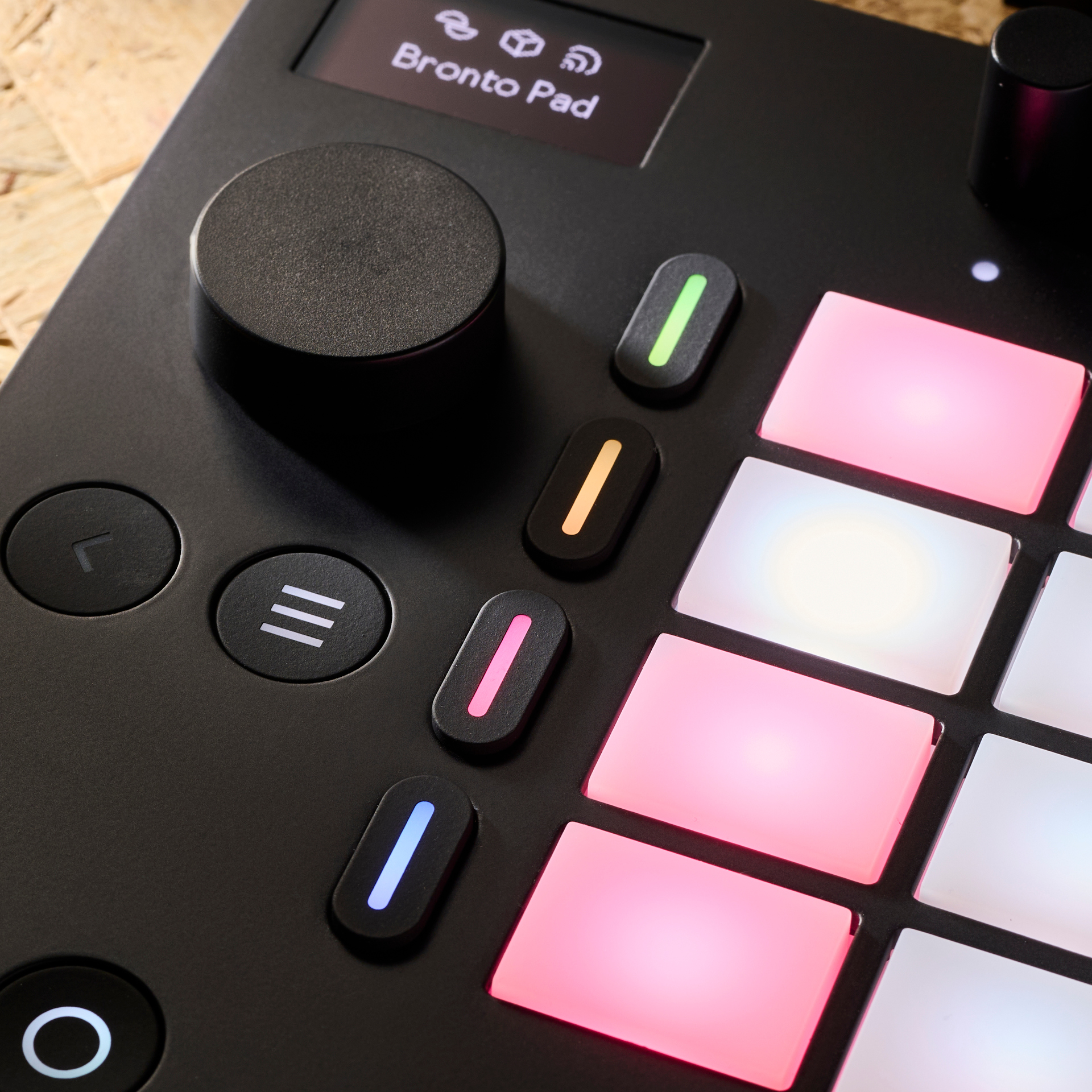
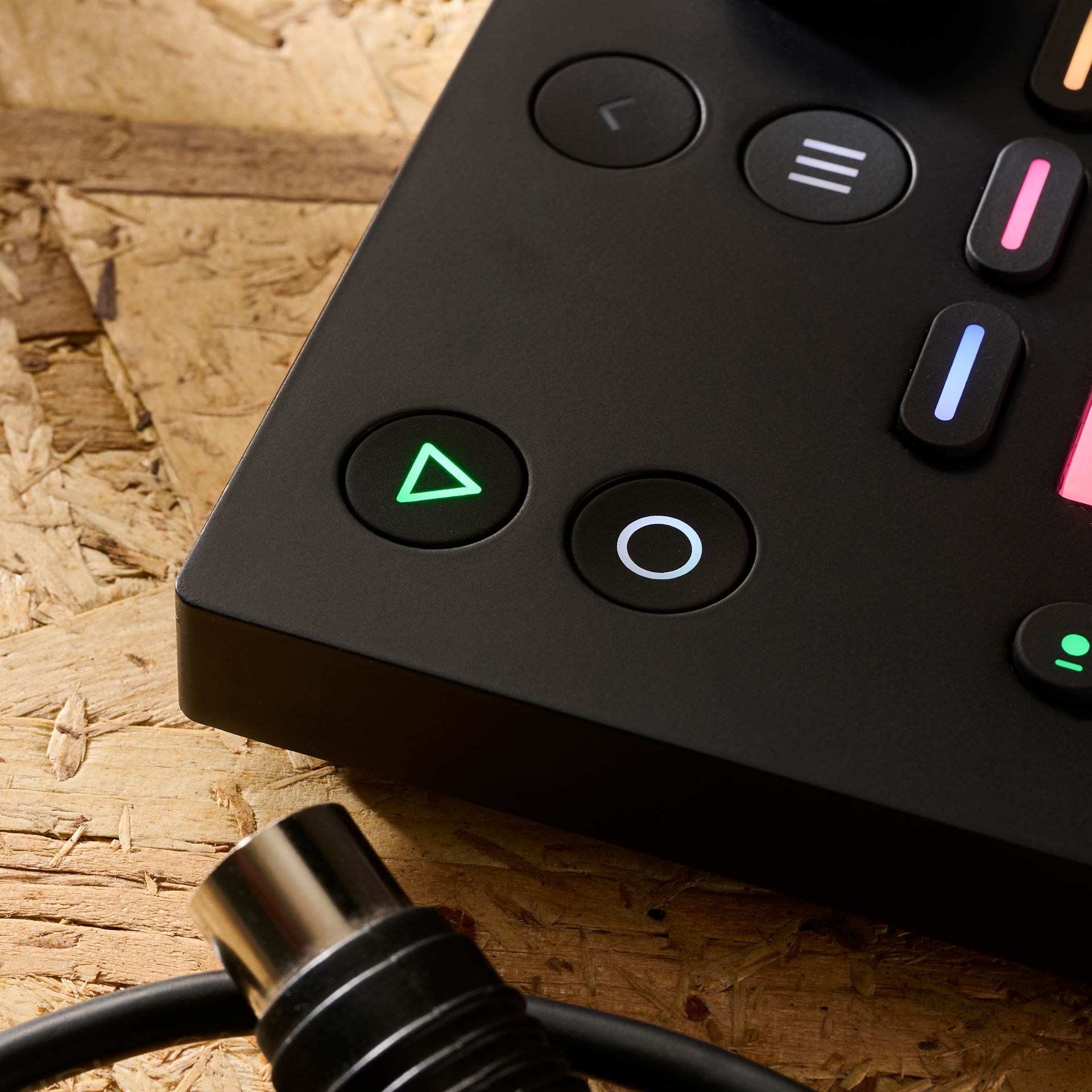
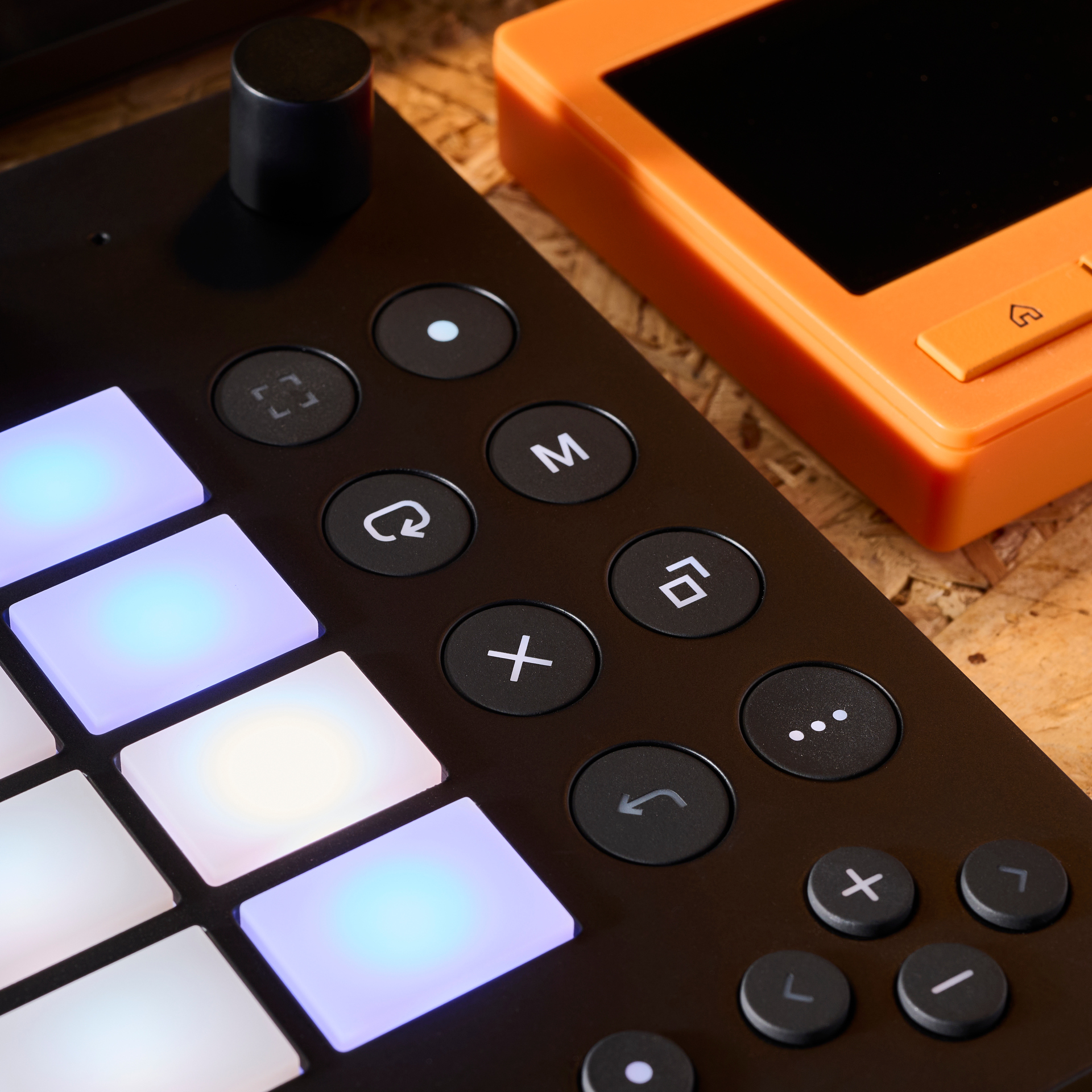
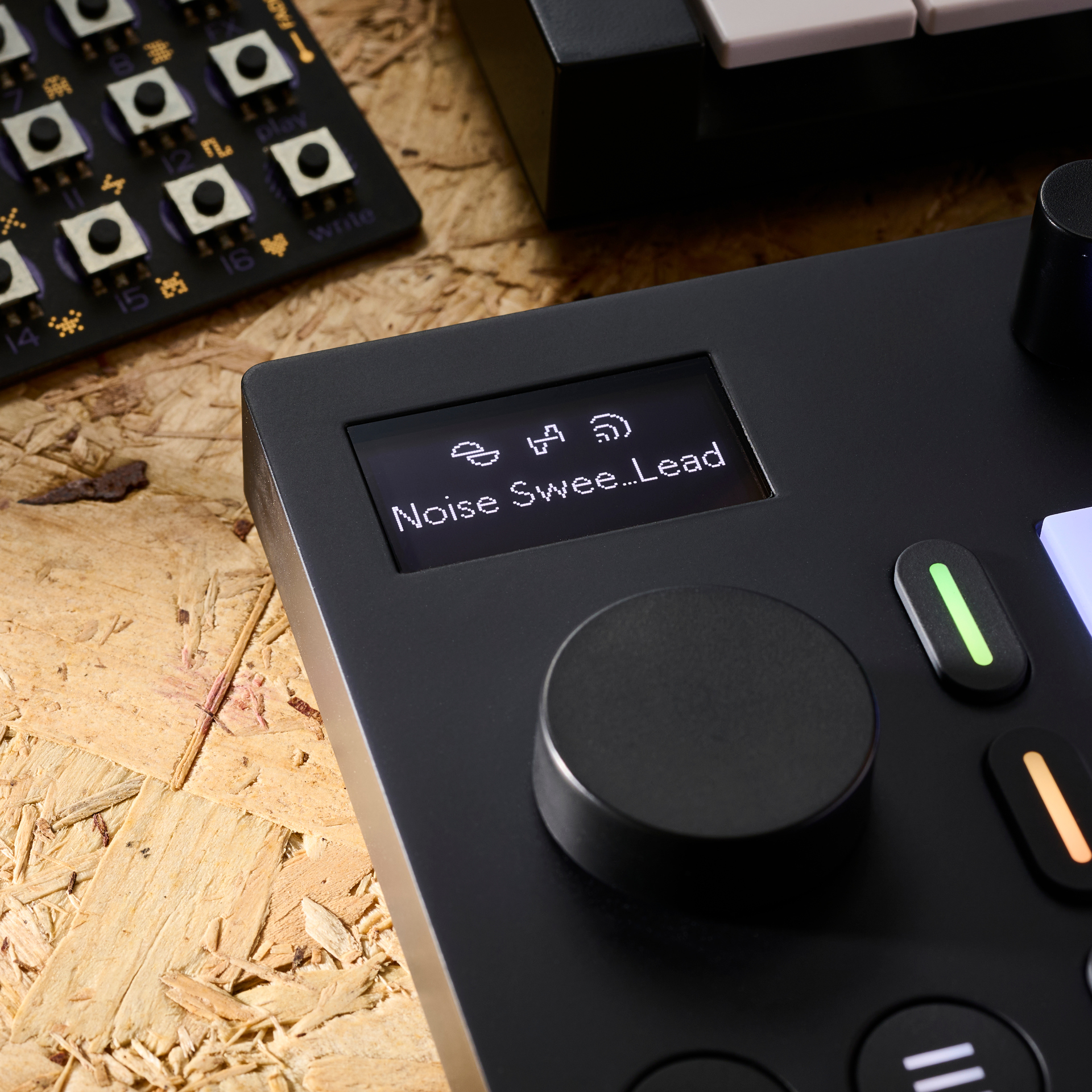
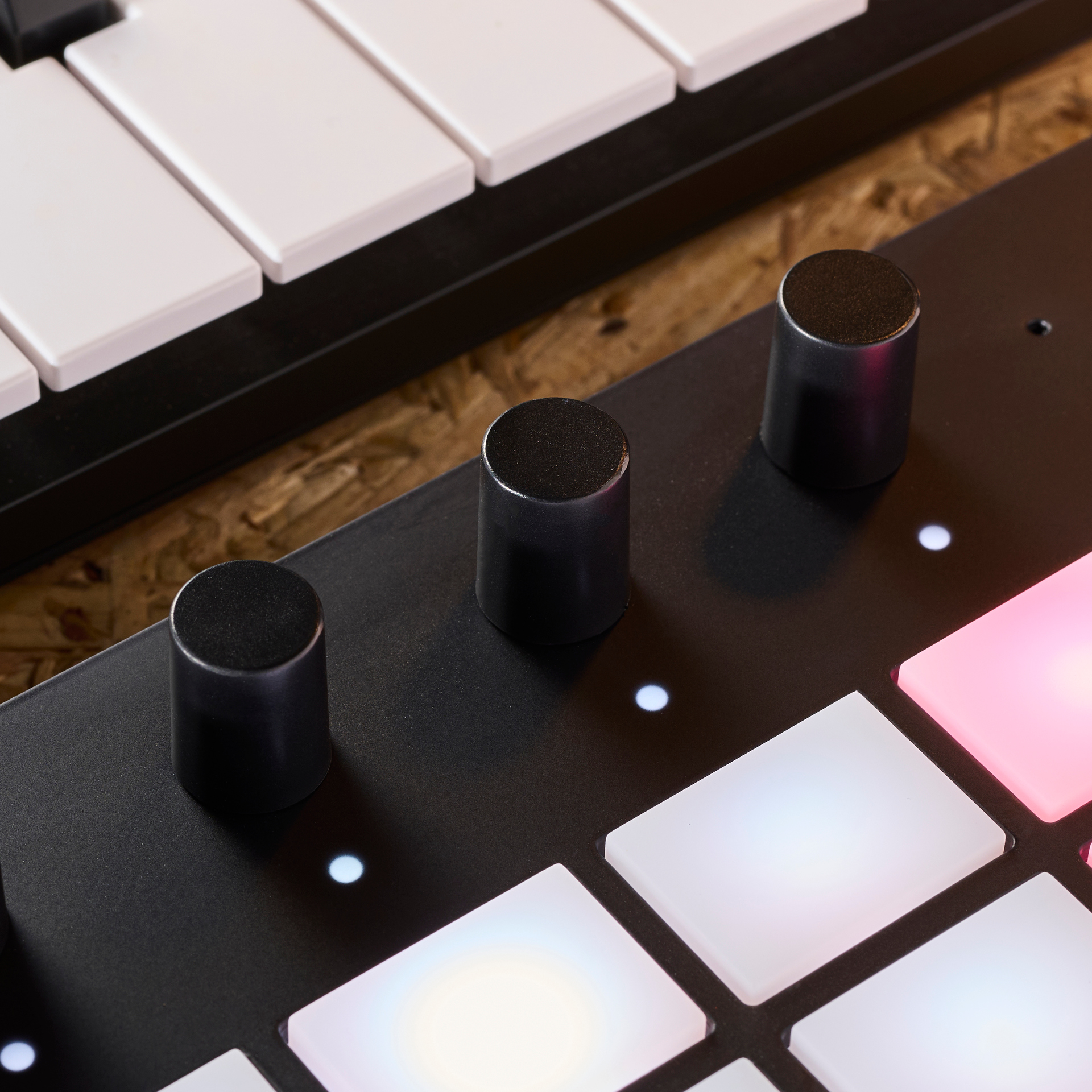
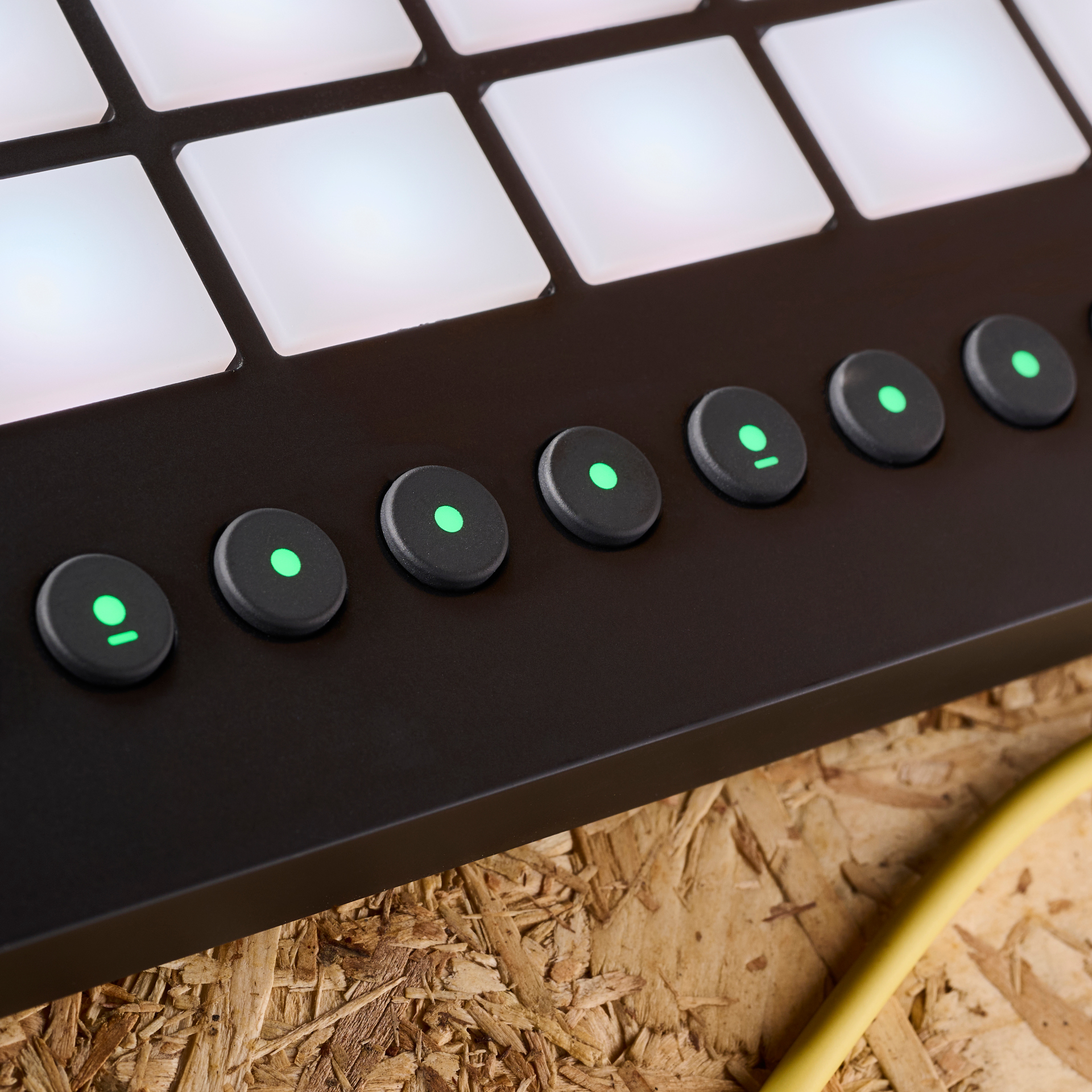
In fact, it’s more accurate to compare Move to Ableton’s iOS app Note. In its standalone mode, Move effectively acts as a hardware version of Note, using an OS that is a near identical copy of the app.
This allows Move to load up to four tracks each based around a simplified version of Live’s Instrument and Drum Racks. The Drum Racks house 16 instances of Live’s newly-added Drum Sampler. The Instrument Racks, meanwhile, can each host a single instance of either Live’s Drift or Wavetable synths, or its Melodic Sampler.
Each Rack can also host two effects, one as an insert and one as a send. These can be selected from a list of Live’s more basic Devices – Reverb, Delay, Chorus-Ensemble, Saturator, Phaser-Flanger, Channel EQ and Dynamics. Move offers basic mixing functionality too, along with a hidden master limiter on the output.
The new Drum Sampler emerges as the real highlight of the toolset, with its playback effects that allow the user to apply ring modulation, granular stretching, looping, pitch envelopes and more.
On the whole, these Devices are all focused around presets – Move comes stocked with a generous library that matches the sounds found in Note, including various artist-created patches. All sound can be edited using the touch-sensitive rotaries along the top of the unit though. In most cases these allow for relatively deep, albeit still limited, editing of sounds. Sampled sounds are served slightly better than the synths here, which are largely restricted to macro-level control over core waveform and filter parameters.
The creative workflow will be familiar to anybody that has tried Note. It’s effectively a simplified version of Live’s clip-launching Session View workflow. Live’s Capture functionality – which retroactively recalls recently played notes and parameter changes – plays a major role, but it’s also possible to record and overdub in a more conventional manner. Standard Live tools such as quantise, scale modes, groove, note repeat and an arpeggiator all add extra flexibility.
Ableton Move: Performance and verdict
To preempt a criticism that will likely be levelled at Move, it is, in effect, just a fancy hardware version of an app that’s available for under £/$10. This is true in terms of pure functionality – in fact, Note isn’t bound by the 4-track limit, meaning you can conceivably create far more complex projects on your phone than you can with Move.
Aside from the fact that this characterisation ignores the value in the well-designed Move hardware itself – which we’ll come to shortly – it also misses the fact that, in-use, Move is more than the sum of its parts.
While Note can be fun and is packed with quality sounds, in our experience it suffers from an over-reliance on Capture and a lack of offline sequencing, as well as occasionally fiddly editing controls. Move immediately addresses these weaknesses simply by virtue of being a dedicated hardware instrument. Its polyphonic pressure-sensitive pads, unsurprisingly, also offer a far better playing experience than you would get with a touchscreen.
Ableton has also been smart in including a simple step sequencer along the lower edge of Move’s interface, meaning that patterns can be programmed more like a classic drum machine, as well as by live playing the pads.
A highlight of Move’s workflow is its fast and fun sampling functionality. By simply hitting the sampling button and pressing a pad in the Drum Rack, users can sample via Move’s 3.5mm audio input, through its built-in mic, or by resampling the output.
This latter feature is particularly handy, as it allows the user to work around that 4-track limit by bouncing patterns or simple melodies down to a single Drum Rack pad. Doing so isn’t simply a way to overcome limitations, but also proves to be one of Move’s most creative tools. It’s here that the new Drum Sampler emerges as the real highlight of the toolset thanks to its playback effects that allow the user to apply ring modulation, granular stretching, looping, pitch envelopes and more.
A similarly handy feature is the 16-pitches mode that lets users play each Drum Sampler pad melodically, effectively allowing users to turn simple one-shot samples into melodies or basslines.
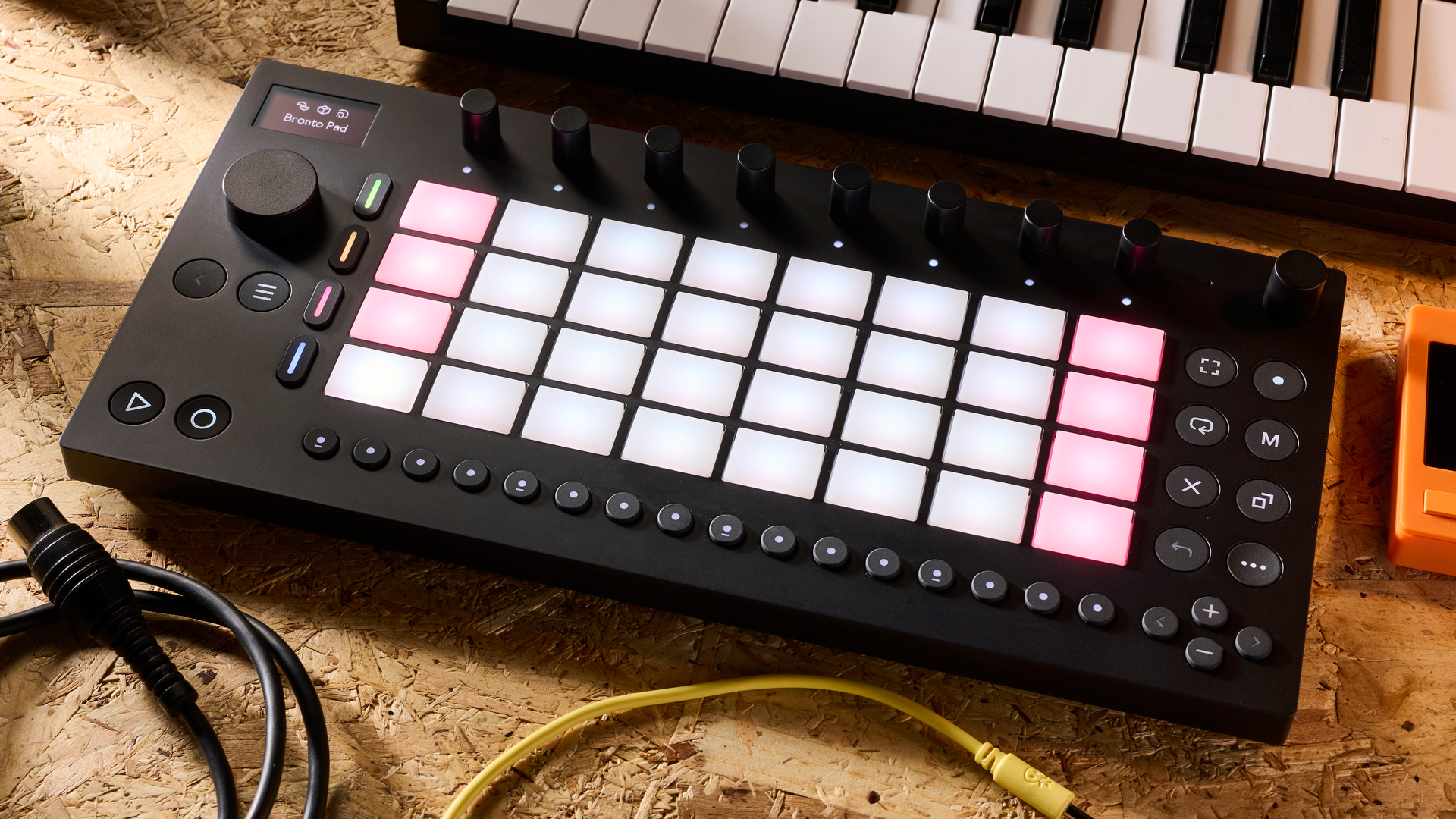
The hardware itself is also impressive. Move is slim and lightweight – far more so than Push – making it feel like a truly go-anywhere device, aided by the inclusion of the onboard battery (Ableton’s promise of 4-hours of life seems broadly accurate in our tests) and a built-in speaker, which isn’t much to write home about quality-wise, but means Move is a properly self-contained device.
On the whole, despite just a small screen, Move’s layout design is intuitive enough that users won’t get lost and reach for the manual – although some of the symbols used to indicate shift functions verge on being a little style-over-clarity.
While browsing sounds is mostly an easy and quick process, without the tagging system of live, adding user-imported samples to kits can be a bit of a hassle. If you're likely to use a lot of your own sounds, it's worth taking some time to prep and save custom Drum Rack devices.
It’s also worth mentioning that, although Ableton seems keen to put the emphasis on Move as a standalone device, its capabilities as a compact controller really add to its appeal. While the functionality in this mode is far more limited than that of Push – there’s little interaction with the browser or audio editing, for example – simply having the playing pads, step sequencer and eight macro controls available in such a convenient device will likely be very appealing to Live users looking for a compact controller setup.
It makes for a convenient on-the-go interface too, although the limited audio outputs mean it’s not really a substitute for a proper I/O device.
'Continuity' and connectivity
Move performs well when it comes to what Ableton calls ‘continuity’, ie how easy it is to take your creations beyond the device itself. Move is WiFi-equipped but can also connect to a computer via USB-C. It’s compatible with both Ableton Cloud and its own browser-based Move Manager, and between these options users can export projects to both the desktop version of Live and Note on iOS. Ableton also tells us that export to Push standalone is coming in a future update too. As you’d hope, opening projects in Live is seamless, with both clips and devices available for deeper editing and arrangement.
While there’s no way to transfer clips or projects to Move from Live, users can upload their own samples to the device. A coming update – which we’ve tested – will let users create compatible Drum and Instrument Racks in Live and upload them to Move, albeit only making use of the compatible device list.
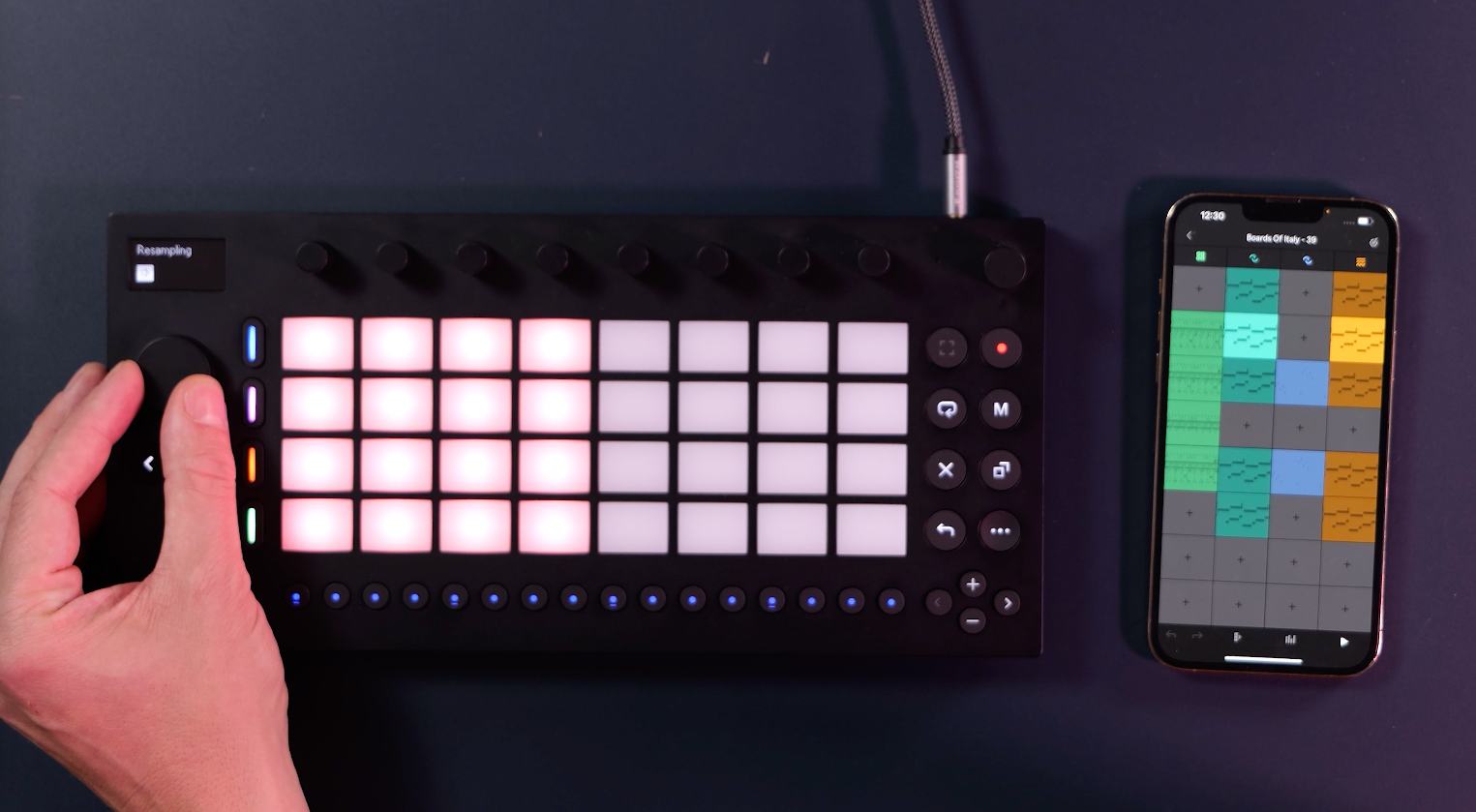
Verdict
What Move does, it does very well, but it’s also worth considering what it isn’t. As mentioned previously, Move is very much a sketchpad tool, and while a coming update will let users load custom drum and instrument patches created in Live, it’s really a one-directional tool. Move will allow you to develop ideas up to a point, but it’s definitely not an end-to-end device that will let you create a finished track. Given its limited analogue connectivity – just a single output for headphones or main out, USB MIDI but no conventional MIDI I/O – it’s not really suited for live performance either. Although the inclusion of Ableton Link does help here.
It’s also a sketchpad that will suit certain Live users far more than others. Move is great for roughing out rhythmic and melodic ideas, and playing around with simple sampling, but its sound design capabilities are fairly light beyond that. If, for example, you’re a musician who tends to base tracks around complex, self-designed synth patches, or by processing sounds using Live’s more complex and creative effects, you may find the included capabilities a little limiting. Similarly, while the sampling capabilities are great for quickly creating one-shots and simple loops, there’s little in the way of audio editing tools, and no sample slicing.
It's worth saying too, that while Move's price is reasonable for everything it does, to get your money's worth, users need to buy into the full workflow. If, for example, you're interested in a standalone synth and sample sequencer but not concerned about seamless Live compatibility, Novation's Circuit Tracks offers more bang-for-your-buck. Similarly, both Novation and Akai make better-value compact devices if you're only interested in controlling Live.
None of that is necessarily a criticism – Move is limited and focused by design, creating a workflow that is fast and accessible. Overall that works in the device’s favour, but as a result it will never be able to please all users. For some musicians, Move might prove to be a gamechanger, but others will likely struggle to fit it into their creative workflow. All the same, within its remit, Move is a very well-designed device at an appealingly reasonable price.
MusicRadar verdict: Move is an excellent sketchpad and handy Live controller. Its limitations make for a fast and accessible workflow, but as a result it will suit some users far more than others.
Ableton Move: Hands-on demos
Ableton Move: Specification
KEY FEATURES: 4-track standalone instrument and controller for Ableton Live. Onboard battery, speaker, audio-interface, WiFi. I/O: 3.5mm audio out/headphone, 3.5mm audio in, USB-C (power and host computer), USB-A (MIDI). Polyphonic pressure sensitive pads, 16-step sequencer, 8 touch-sensitive rotaries.
CONTACT: Ableton
I'm the Managing Editor of Music Technology at MusicRadar and former Editor-in-Chief of Future Music, Computer Music and Electronic Musician. I've been messing around with music tech in various forms for over two decades. I've also spent the last 10 years forgetting how to play guitar. Find me in the chillout room at raves complaining that it's past my bedtime.
“I used everything I knew about music”: How Green Day exceeded expectations with their most ambitious song
YouTube just added AI tools that makes musicians, library music and video editors redundant
“Every one of them said yes without hesitation": Hank Marvin and Roger Taylor have just remade a '60s classic for charity
